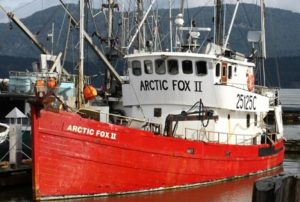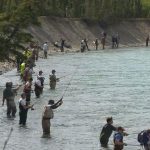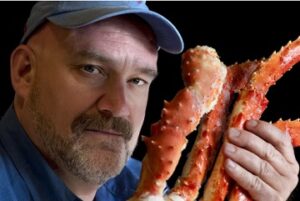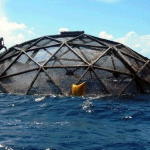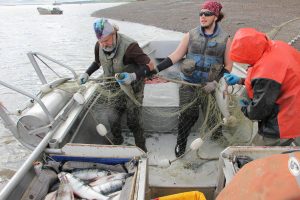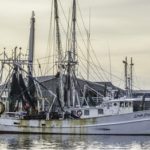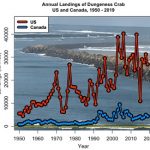Tag Archives: Sargasso Sea
Inside the Slimy, Smelly, Secretive World of Glass-Eel Fishing
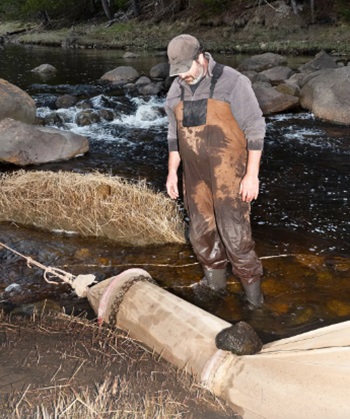 The Sargasso Sea, a warm, calm expanse of the North Atlantic Ocean, is bordered not by land but by four strong currents—a gyre. Vast mats of prickly brown seaweed float so thickly on the windless surface that Christopher Columbus worried about his ships getting stuck. The biodiverse sanctuary within and beneath the sargassum produces Anguilla rostrata, the American eel. Each female lays some eight million eggs. The eggs hatch as ribbonlike larvae that drift to the Gulf Stream, which carries them to the continental shelf. By the time they reach Maine, the larvae have transformed into swimmers about the length of an index finger, with the circumference of a bean sprout and the translucence of a jellyfish. Hence their nickname, glass eels, also known as elvers. The glass eel is barely visible, but for a dark stripe—its developing backbone—and a couple of chia seeds for eyes. “Ghosts on the water,” a Maine fisherman once called them. Travelling almost as one, like a swarm or a murmuration, glass eels enter tidal rivers and push upstream, pursuing the scent of freshwater until, ideally, they reach a pond and commence a long, tranquil life of bottom-feeding. more, >>CLICK TO READ<< 10:50
The Sargasso Sea, a warm, calm expanse of the North Atlantic Ocean, is bordered not by land but by four strong currents—a gyre. Vast mats of prickly brown seaweed float so thickly on the windless surface that Christopher Columbus worried about his ships getting stuck. The biodiverse sanctuary within and beneath the sargassum produces Anguilla rostrata, the American eel. Each female lays some eight million eggs. The eggs hatch as ribbonlike larvae that drift to the Gulf Stream, which carries them to the continental shelf. By the time they reach Maine, the larvae have transformed into swimmers about the length of an index finger, with the circumference of a bean sprout and the translucence of a jellyfish. Hence their nickname, glass eels, also known as elvers. The glass eel is barely visible, but for a dark stripe—its developing backbone—and a couple of chia seeds for eyes. “Ghosts on the water,” a Maine fisherman once called them. Travelling almost as one, like a swarm or a murmuration, glass eels enter tidal rivers and push upstream, pursuing the scent of freshwater until, ideally, they reach a pond and commence a long, tranquil life of bottom-feeding. more, >>CLICK TO READ<< 10:50
Catch of the Night
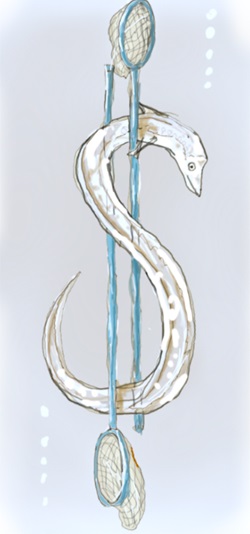 The American eel’s lifestyle is as elusive as it gets. No one has seen one mate in the Sargasso Sea, the eel’s birthplace. However, we know that after hatching, eels begin their journey to land by following the Antilles Current and Gulf Stream toward the mouths of North American rivers. Elvers (juvenile specimens also known as glass eels) then venture inland, mature, and later return to the ocean to mate, with the entire process ranging from a few months to a few years in duration. The unfortunate truth is that eel populations worldwide are rapidly declining. They have faced overfishing since the 1970s, resulting in poaching regulations in most of the world. Today, just two US states award eel fishing licenses: South Carolina and Maine. Because South Carolina only allows traps for fully grown eels, Maine has become the heart of the elver issue. more, >>click to read<< By Phil Avilov10:31
The American eel’s lifestyle is as elusive as it gets. No one has seen one mate in the Sargasso Sea, the eel’s birthplace. However, we know that after hatching, eels begin their journey to land by following the Antilles Current and Gulf Stream toward the mouths of North American rivers. Elvers (juvenile specimens also known as glass eels) then venture inland, mature, and later return to the ocean to mate, with the entire process ranging from a few months to a few years in duration. The unfortunate truth is that eel populations worldwide are rapidly declining. They have faced overfishing since the 1970s, resulting in poaching regulations in most of the world. Today, just two US states award eel fishing licenses: South Carolina and Maine. Because South Carolina only allows traps for fully grown eels, Maine has become the heart of the elver issue. more, >>click to read<< By Phil Avilov10:31
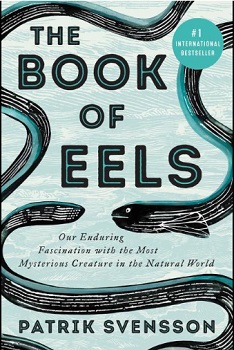
How much like the eel are we?
“The Book of Eels” is as much about origins and meaning as it is about eels. Once people comprehend the eel’s astonishing life journey, it’s difficult not to identify, seek metaphors of association and anthropomorphize. The eels’ mysteries are ours as well. After millennia of study and conjecture, we now know that American and European eels get their start in the Sargasso Sea northeast of Cuba. We also know that the nascent eels – tiny, transparent, flat larvae that are shaped like willow leaves – float off on currents either to America or Europe. Upon arriving at a predestined coast, their transformed little bodies smoothly transition from salt to freshwater. They choose a brook or stream and eventually settle down at some spot – random or not is unknown >click to read< 15:22
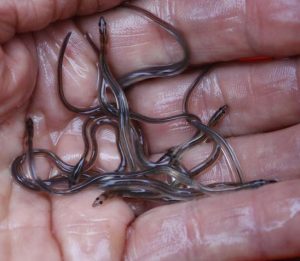
Why Maine Is The Only State In The US With A ‘Significant’ Elver Fishery
If you’ve ever read a story in the news about elver fishing season, you’ve probably seen some variation of this line: “Maine’s the only state in the U.S. with a significant fishery for elvers.” Maybe you thought that’s because elvers don’t exist in large numbers outside of Maine — that would be a reasonable assumption. But the real reason is somewhat more complicated. Let’s start at the beginning, in the Sargasso Sea. Although it sounds romantic, the Sargasso Sea is actually just an area of the North Atlantic that’s full of Sargassum,,, >click to read<14:56
100-year-old mystery solved: Adult eel observed for the first time in the Sargasso Sea
 After more than a century of speculation, researchers have finally proved that American eels really do migrate to the Sargasso Sea to reproduce. A team supervised by Professor Julian Dodson of Université Laval and Martin Castonguay of Fisheries and Oceans Canada reports having established the migratory route of this species by tracking 28 eels fitted with satellite transmitters. One of these fish reached the northern boundary of the Sargasso Sea, the presumed reproduction site for the species, after a 2,400 km journey. Read the rest here 13:32
After more than a century of speculation, researchers have finally proved that American eels really do migrate to the Sargasso Sea to reproduce. A team supervised by Professor Julian Dodson of Université Laval and Martin Castonguay of Fisheries and Oceans Canada reports having established the migratory route of this species by tracking 28 eels fitted with satellite transmitters. One of these fish reached the northern boundary of the Sargasso Sea, the presumed reproduction site for the species, after a 2,400 km journey. Read the rest here 13:32

































